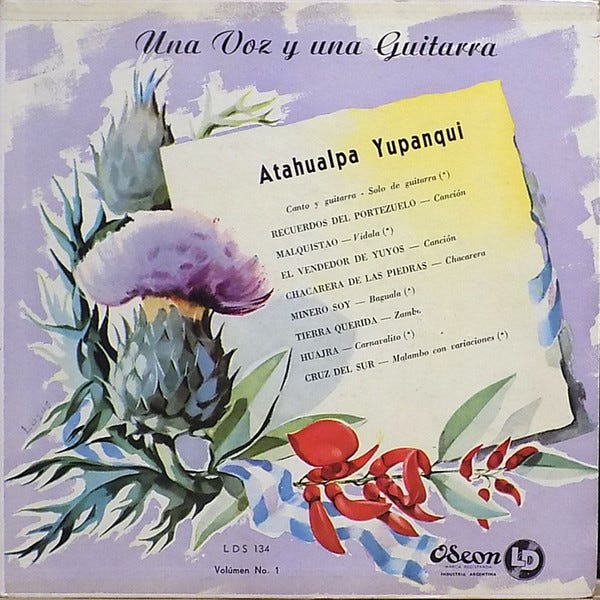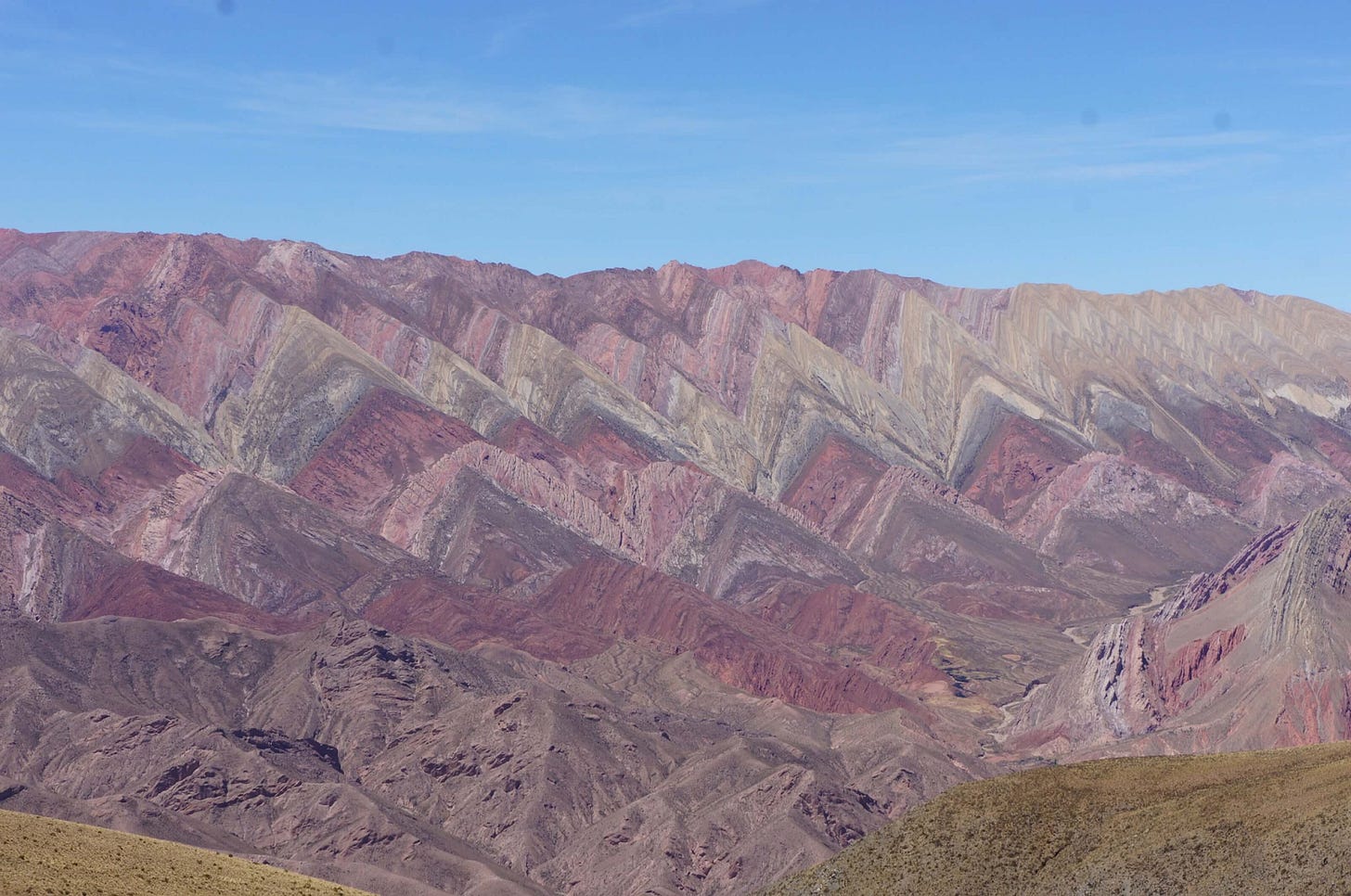EVERY GENRE PROJECT - September 8 - Chacarera
Genre of the Day - Chacarera
Album of the Day - Una voz y una guitarra by Atahualpa Yupanqui (1953)
There are times with this column that I’m feeling particularly loony and I sometimes interpret the random genres given to me as signs. Ultimately, it’s an entertaining and inconsequential exercise in mystical randomness—it’s a fun game to consider why on a particular day, of all days, would a particular genre come my way out of the over 2,000 to draw from and draw connections between the wide world of music and my little life. Today’s genre is literally the polar companion to yesterday’s (electro)tango. Normally when the random picker selects a genre too similar to a recent one, I skip it; but I think the side-by-side nature of these last two is a reminder of the merits of grounding yourself in the mud and the cumulative, ever-expansive nature of learning.
Chacarera breathes the rarefied fresh air of the Argentinian countryside as the more pastoral analogue to tango. The dance and music genre highlights the worldwide tangibility of the urban and rural musical divide, though it’s said that more Argentinians can dance chacarera than tango. We Americans know that divide intimately—country is the defining sound of, well, the country, though it continues to meld with cosmopolitan sounds and blur traditional boundaries in its newfound chart takeovers. In the countryside, the process of cultural mixing is totally different, and on a more basic day-to-day level, different priorities pepper the meaning of each day, different thoughts come about, and cultural expressions ultimately look radically different. Tango and chacarera both have the same spiritual predecessor in Spanish contradanzas, but through an unusual mix of instruments and cosmopolitan boost from its 1920s popularity in Paris, tango became an international phenomenon whereas chacarera’s cultural salience lies in its folkloric affirmations of northern Argentina’s rugged and rural beauty.
In sharp contrast to tango’s conspicuously drumless (not always, but often) atmosphere, chacarera’s rhythms come from a materially on-the-nose source. The bombo leguero is a drum composed of a hollowed-out tree trunk and a membrane sourced from a cow or sheep. The guitar, strummed in a flamenco-esque rasgueo pattern, and violin round out the melodic ensemble accompanying the partnered dance; a rhythmic mishmash follows in a 6/8 instrumental melody and 3/4 bombo rhythm. Despite that potential source of confusion, one site on tango optimistically claims that it only takes 1.5 hours to become a chacarera master.
Atahualpa Yupanqui indulges listeners in the sweeping physical and sonic landscapes of chacarera, providing some of the finest guitar playing of any Argentine folk musician that prompted an invite to perform with Édith Piaf. Initially, these compositions may seem subdued and even mournful as in “Recuerdos del Portezuelo,” but his malleable talent reveals nuances as prismatic as the country’s famous multihued mountains. There’s leagues of intrigue in the minor-key progressions of “Malquistao,” as the singer chooses not to interject in the guitar’s journey. The bombo occasionally whispers into songs as between the gentle jumps of “Minero Soy,” but his vision of chacarera is ultimately grounded in the personal and the communion between man and guitar that builds into a wall of striking strumming in “Huajra.” From the city to the country, music serves as synopsis of the stories of human communities in any setting, and there is beauty in the overlap between chacarera’s bucolic calm and tango’s bustling worldliness.






